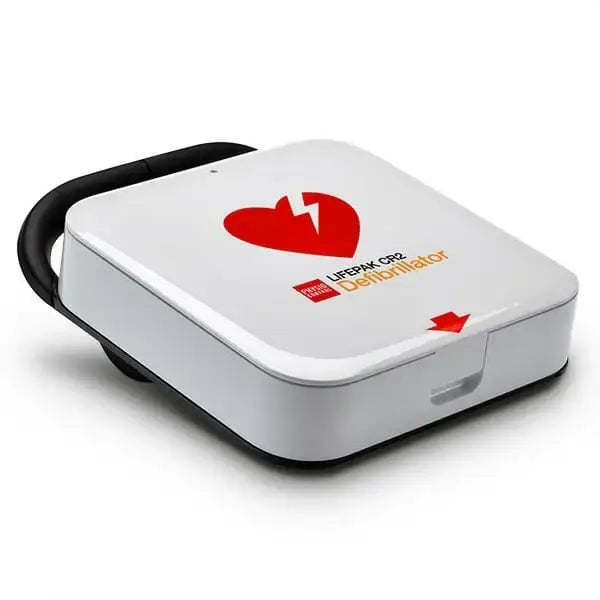AEDs are Literal Life Savers
In today's safety-conscious environment, Automated External Defibrillators (AEDs) have become essential life-saving devices in public and private buildings. But one question many building managers, safety officers, and business owners struggle with is determining the appropriate number of AEDs required for their facility. Let's explore this important topic to ensure your building meets both safety standards and practical emergency response needs.

https://aed.ca/products/stryker-physio-cr2-semi-auto-english-wifi
Understanding AED Coverage Requirements
When determining how many AEDs you need, several factors come into play:
Building Size and Layout
The size of your building is a primary consideration. Larger facilities naturally require more AED devices to ensure rapid access during cardiac emergencies. Industry standards recommend:
- Response Time: AEDs should be accessible within a 3-minute round trip from any location in your building
- Distance: Typically, this translates to AEDs being placed approximately 150-200 feet apart
- Multiple Floors: Each floor should have at least one AED, with additional units for larger floor plans
Occupancy and Risk Factors
Consider who uses your building and their risk profile:
- Age Demographics: Buildings with older occupants may require more comprehensive AED coverage
- Physical Activities: Facilities like gyms or sports centers have higher cardiac incident risks
- Visitor Traffic: High-traffic public buildings benefit from additional AED devices
AED Placement Best Practices Across Canada
In Toronto, Vancouver, Calgary, Ottawa,Barrie and across Canada, AED placement should follow specific guidelines for maximum effectiveness:
- High-Visibility Locations: Place AEDs in central, easily accessible areas with clear signage
- Common Areas: Lobbies, reception areas, and main hallways are ideal placement spots
- Near Existing Emergency Equipment: Positioning AEDs near fire extinguishers can help people locate them quickly
Calculating Your Building's AED Needs
As a general rule, consider these starting points:
- Small Buildings (under 10,000 sq ft): Minimum of 1 AED
- Medium Buildings (10,000-50,000 sq ft): 2-5 AEDs
- Large Buildings (over 50,000 sq ft): 5+ AEDs, with additional units based on layout and occupancy
Remember that these are baseline recommendations. Your building's specific needs may vary based on layout complexity, occupant vulnerability, and local regulations.
AED Safety and Maintenance Considerations
Having the right number of AEDs is just the beginning. Ensuring they're maintained properly is equally crucial:
- Schedule regular maintenance checks
- Replace batteries and pads according to manufacturer recommendations
- Train multiple staff members in AED usage
- Register your AEDs with local emergency services
Where to Get an AED for Your Building
When looking for the best AED for your building's needs, quality and reliability are paramount. AED.ca offers comprehensive solutions for businesses and facilities across Toronto and Canada. Their selection includes leading AED devices suitable for various environments, from office buildings to industrial facilities.

https://aed.ca/products/zoll-aed-3
Why Choose AED.ca?
AED.ca stands out as a premier provider of AED devices across Canada for several reasons:
- Expert Consultation: They help determine the exact number of AEDs your building needs
- Quality Selection: Access to the best AED brands and models on the market
- Comprehensive Support: From initial purchase to ongoing maintenance
- Compliance Expertise: Guidance on meeting local regulations for AED placement
AEDs for Sale: Investment in Safety
While considering AEDs for your building, remember that these devices represent an investment in safety rather than just an expense. AED.ca offers competitive pricing on high-quality devices that meet all Canadian safety standards and regulations.
Conclusion
Determining the right number of AEDs for your building involves careful consideration of size, layout, occupancy, and risk factors. By following the guidelines outlined above and consulting with experts like those at AED.ca, you can ensure your facility is properly equipped to handle cardiac emergencies.
For buildings in Toronto and across Canada, partnering with a trusted provider like AED.ca can make the difference between simply meeting minimum requirements and creating a truly safe environment for everyone who enters your building.
Remember, in cardiac emergencies, every minute counts—having the right number of accessible AEDs could save a life. Contact AED.ca to find out more information or for a custom quotation. They are Canada's AED Company.






